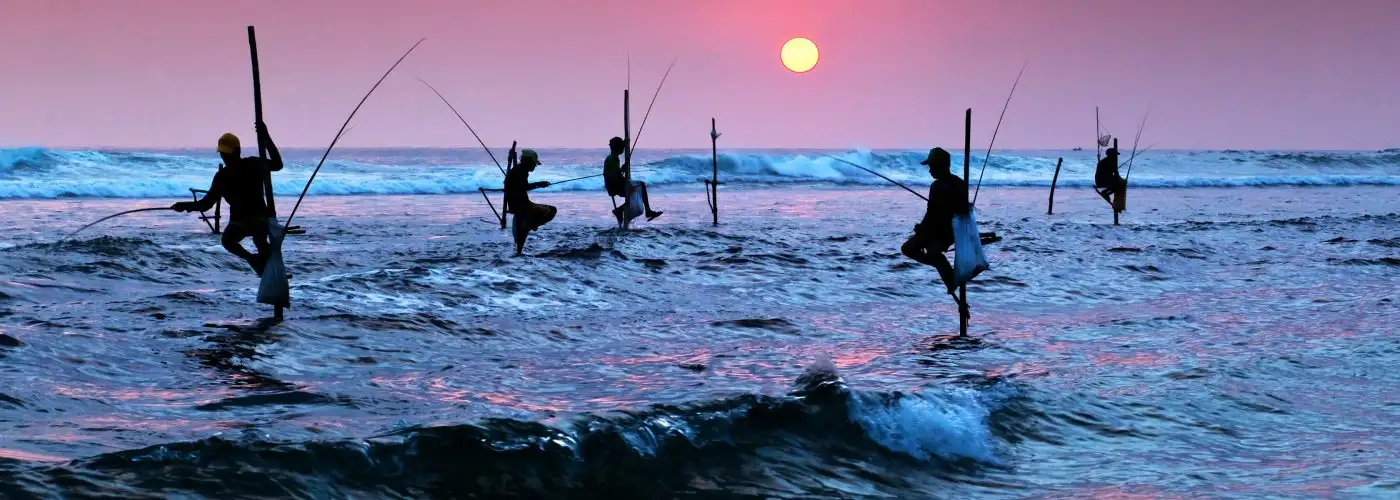Some lessons are best learned at the dinner table, and culturally-diverse countries like Sri Lanka have plenty to teach through food. Every meal on this reemerging island tells a tale. Each ingredient has a backstory that locals are eager to share.
Exploring Sri Lanka on an Intrepid Travel Real Food Adventure, I experienced much more than just the tastes of authentic curries and confections. My small group discovered the culinary adventures that lurk around every corner, from coconut sap tappers who expertly climb towering palm trees, to stilt fishermen perched among the waves of the Indian Ocean.
Each bite of traditional Tamil food, colorful South-Indian cuisine, succulent seafood, fried snacks from street vendors, and hearty family-style meals taught me more about this island and its people. Here are 11 dishes you shouldn’t miss in Sri Lanka, plus something that each will teach you about the country.
Image Gallery
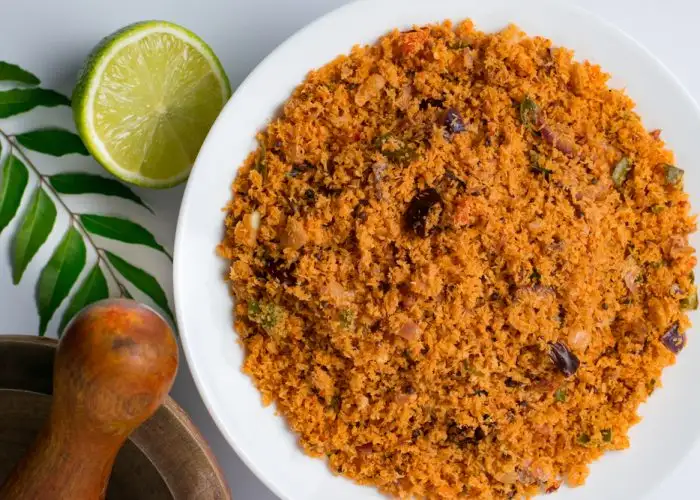
Start with a taste of what almost all Sri Lankan food is based upon: coconut. Whether it's the oil for cooking, its flesh grounded into fine flour, bits used to make coconut milk for curry dishes, its natural water for drinking, or its sap for fermenting, coconut is in virtually everything Sri Lankans eat–and use: Its dry, stringy shell is salvaged to make industrial goods like rope.
A deliciously spicy salad, coconut sambol is served with most meals as a salad or relish. Freshly ground coconut is mixed with chili, curry, and a vast variety of herbs and spices. The concoction's prevalence embodies Sri Lanka's crucial palm tree bounty, as well as the spicy flavors that dominate Sri Lankan meals. You'll find it served at all times of day, in the breakfast buffet line and as an afternoon snack on roti—which I'll get to later.

Start with a taste of what almost all Sri Lankan food is based upon: coconut. Whether it's the oil for cooking, its flesh grounded into fine flour, bits used to make coconut milk for curry dishes, its natural water for drinking, or its sap for fermenting, coconut is in virtually everything Sri Lankans eat–and use: Its dry, stringy shell is salvaged to make industrial goods like rope.
A deliciously spicy salad, coconut sambol is served with most meals as a salad or relish. Freshly ground coconut is mixed with chili, curry, and a vast variety of herbs and spices. The concoction's prevalence embodies Sri Lanka's crucial palm tree bounty, as well as the spicy flavors that dominate Sri Lankan meals. You'll find it served at all times of day, in the breakfast buffet line and as an afternoon snack on roti—which I'll get to later.
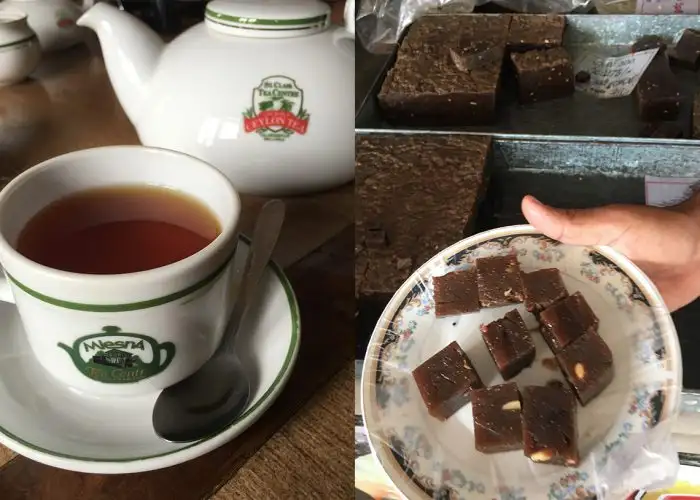
To balance out the heat of their traditional food, Sri Lankans love their sweets. Hyper-sugary confections like dodol—made from, you guessed it, coconut—dominate the offerings at local roadside shops. The candy was introduced by Malays in the 17th century, and is made from thick, fresh coconut milk that's heated and slowly simmered with palm sugar until it condenses. It's then poured and cooled into a thick sheet of the sticky dessert, which is sliced into fudge-sized pieces to be enjoyed with tea and milk. Tea is also a dominant part of Sri Lanka, and the country's biggest grown food export.
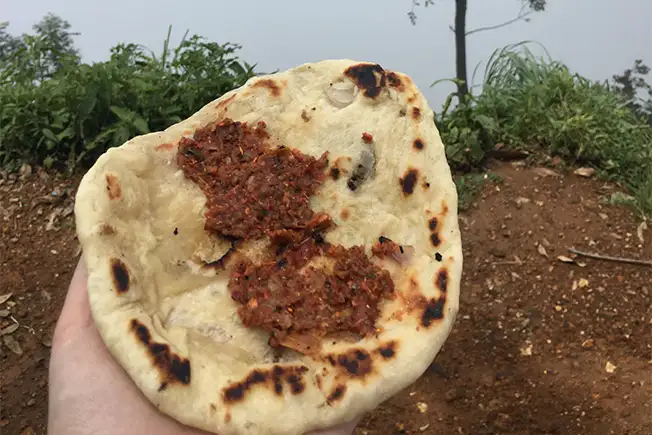
This vastly popular unleavened bread is prevalent in many Indian-influenced countries, and Sri Lankans have mastered making it in a variety of ways. Roti plays a part in many meals—sometimes cooked flat and served to soak up every last spicy drop of curry, baked around meat and vegetable fillings, or simply slathered with chili paste.
Made from coconut flour, roti is fast and easy to cook. My favorite versions had delicious fillings and came from some of the many local family bakeries we encountered. Pop into one of these bustling roadside shops to get all the types of roti you'd like to try—fish, chicken, egg, vegetable—for just a few hundred Sri Lankan rupee, which is about two American dollars (see XE.com for conversion rates). Most of them have a spicy kick, and their pillowy texture will have you addicted at the first bite.
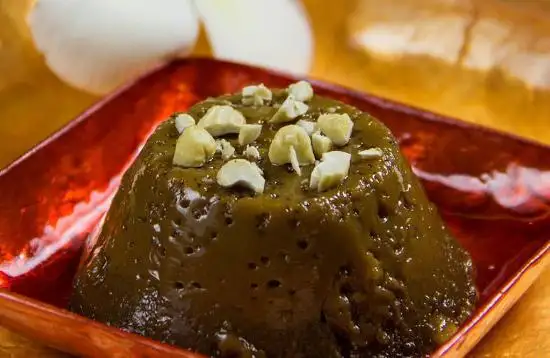
Sri Lankan custard was easily my favorite way to finish a meal after a fiery curry. Like a softer, sweeter flan, wattalappam is (of course) made from coconut milk, with spices like cardamom, cloves, and nutmeg. It can be served cool or hot, and is a traditional dessert of the Tamil people.
The Tamil were persecuted by the Sri Lankan government in a decades-long civil war that ended in 2009. There are about two million Tamil in Sri Lanka now—making up ten percent of the nation. All different religions (Hinduism, Christianity, and Islam) make up this minority group, which speaks Tamil—one of Sri Lanka's three main languages.
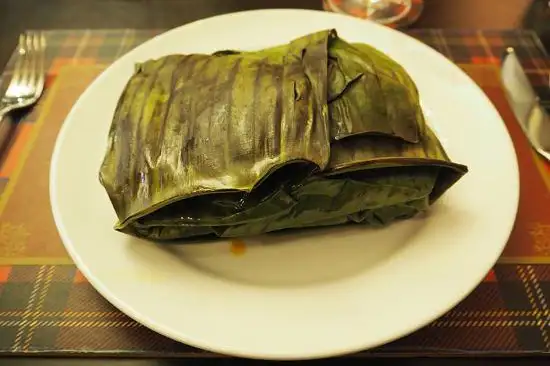
I learned the story of an even smaller Sri Lankan minority group—Dutch and Portuguese-descendant Sri Lankans called Burghers, who currently make up less than one percent of the population—over a meal of traditional Burgher lamprais. It's a fragrant meal of spiced yellow rice with meats, curry, sambol, plantains, and a hardboiled egg, all wrapped in a banana leaf container. The locals told me these neatly packaged individual meals are about as hard to find in Sri Lanka now as the dwindling Burgher population.
Sri Lanka was colonized by the Portuguese in 1505, until the Dutch took control of the island in 1640—about 175 years before the British entered the picture. Many English-speaking Eurasian Burghers remained in the country until the mid-20th century when Sri Lanka secured independence from Britain and declared Sinhalese and Tamil its main languages. English had long been the mother tongue until then, and most remaining Burghers still speak English. Many have since left to live in Australia or the United Kingdom.
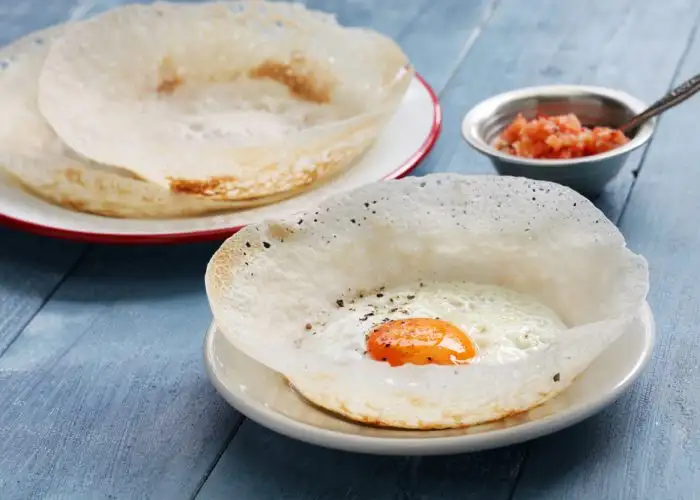
The most quintessentially Sri Lankan food you can get is probably a hopper, or appa—Sri Lanka's take on a crepe. These light staples are usually made in the shape of a bowl that holds a fried egg and all your favorite chutneys.
Hoppers can also be made without the added egg, or even in a steamed, nest-like version that's popular at the breakfast table. In my opinion, nothing beats crunching the wafer-thin edges of a freshly fried hopper bowl as you chow down on a perfectly cooked egg and some spicy sambol. Hoppers can also be made as a sweet variation, with yogurt and palm syrup in lieu of egg.
It remains unclear where these edible bowls originated, though they do resemble the thin pancakes popular in the homelands of some of Sri Lanka's first European settlers. Find hoppers at street-food carts, hotel buffets lines, family kitchens, and local restaurants.
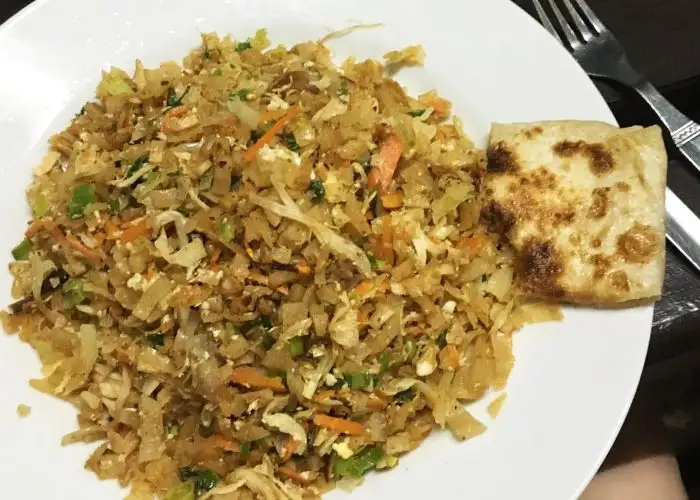
"Chop chop" is a both a word and a sound you'll hear a lot when you're in pursuit of kottu—a stirfry of shredded roti, fried egg, vegetables, and meat. Sri Lanka's answer to fried rice, kottu is also called "chop chop" to illustrate the chaotic process of making the dish.
Cooks add all of the ingredients onto a grill and eviscerate them before adding and scrambling an egg (if desired). Like many dishes in Sri Lanka, you can choose the meat you want or opt for vegetables—about 82 percent of the population is Buddhist or Hindu, which means there are plenty of vegetarian options in most places. Just be wary about coming here with a coconut allergy.
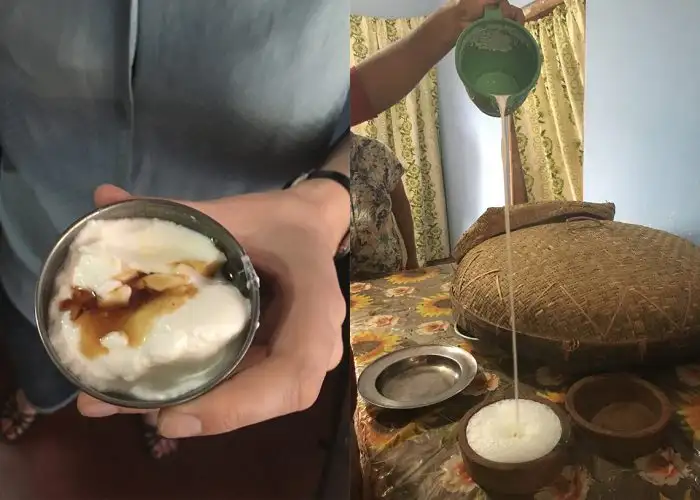
Another super-sweet favorite of Sri Lankans is buffalo curd—a thick yogurt made from the milk of water buffalo. Buffalo curd is almost always mixed with palm syrup or honey to tame the intense tang of the yogurt. Water buffalo are popular farm animals in Sri Lanka, and can be seen along roads and in fields outside of urban areas—especially in the concentrated farming areas near Yala National Park. The yogurt is sold at grocery stores in huge terra cotta pots like these we saw at a farm in Hambantota.
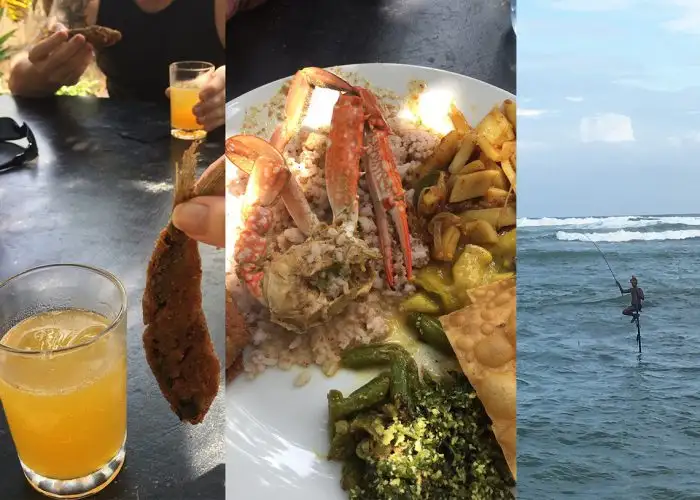
Seafood in spicy, sweet, or sour curry sauces with rice is everywhere in Sri Lanka. You're sure to experience at least one of these crab, prawn, or cuttlefish dishes, since seafood is so prevalent on the "Pearl of the Indian Ocean." The best meal I had in Sri Lanka (and maybe ever) was cuttlefish and whole-crab curry in Mirissa, caught and cooked by a stilt fisherman whom we watched practice his particular style of fishing—a practice that's found exclusively on this island.
Amid thrashing waves and bobbing surfers, Sri Lanka's stilt fishermen set up semi-permanent stilt perches that they climb atop daily to fish offshore. The bountiful Indian Ocean's crabs are sweet and light, the perfect pairing with a hot yellow curry and whatever other fish these men are lucky enough to pull in. The seaside city of Mirissa is perpetually hot and humid, so you'll want to wash this meal down with a cold cocktail of local coconut arrack (best enjoyed with small bites like whole-fried sardinella), or a refreshing ginger beer.
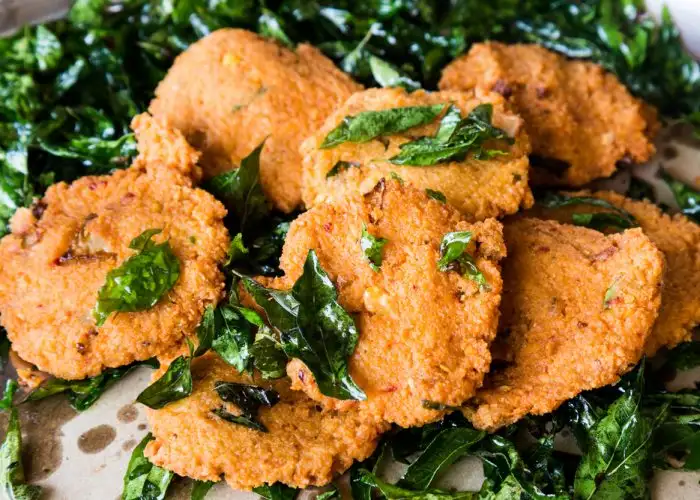
Don't leave Sri Lanka without trying the piping hot street food. Vendors serve up freshly fried goodies all afternoon and night, everything from morsels of fried batter sprinkled with fragrant curry leaves to steaming samosas and full hoppers. My favorite Sri Lankan street food was masala vadai—dhal fritters packed with zesty chili and ginger. The lentils that make these falafel-like fritters can be cooked in a variety of ways, and are often served in curries or as a satisfying dinner, but nothing beats their deep-fried crunch.
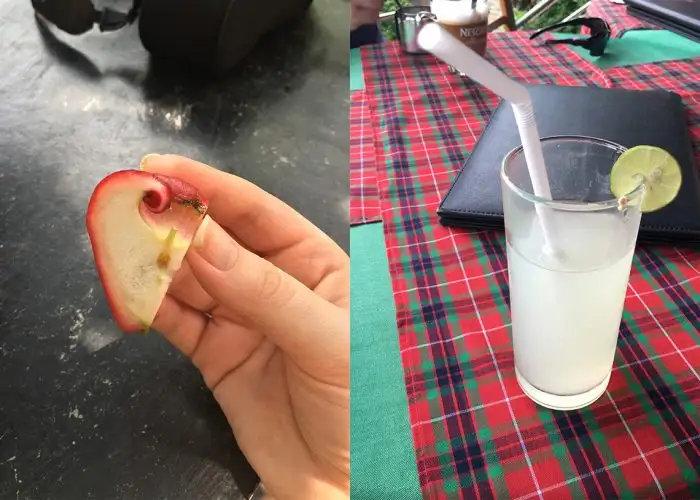
Like many tropical destinations, Sri Lanka's colorful fruits are not to be missed—and some are so unique to this area that you've likely never heard of them.
Wood apple, which many consider an acquired taste, is native to the region; some visitors love the pulpy taste and texture more than others. Rose apples are much more tart and aptly named (pictured). Juicy green soursop fruits are plentiful, and sweet enough to please most palates familiar with their Central American counterparts. Mango, papaya, limes, and pineapples are also popular, and perfect for juicing—the thirst-quenching lime juice on every restaurant and juice-counter menu quickly became my favorite drink.
More from SmarterTravel:
- To Uncover the Magic of Sri Lanka, Go Small
- 20 Best Street Foods to Eat (If You Dare)
- 10 Tastiest Fast Foods You Can’t Get in America
Associate Editor Shannon McMahon writes about all things travel. She visited Sri Lanka on a Real Food Adventure as a guest of Intrepid Travel. Follow her adventures on Instagram @shanmcmahon and on Twitter @shanmcmahon_.
We hand-pick everything we recommend and select items through testing and reviews. Some products are sent to us free of charge with no incentive to offer a favorable review. We offer our unbiased opinions and do not accept compensation to review products. All items are in stock and prices are accurate at the time of publication. If you buy something through our links, we may earn a commission.
Related
Top Fares From
Today's Top Travel Deals
Brought to you by ShermansTravel
Kenya: 14-Night Tour, Incl. Tanzania &...
smarTours
 vacation
$7125+
vacation
$7125+
7-Night Caribbean Round-Trip Cruise From Orlando:...
Norwegian Cruise Line
 cruise
$739+
cruise
$739+
Ohio: Daily Car Rentals from Cincinnati
85OFF.com
 Car Rental
$19+
Car Rental
$19+
